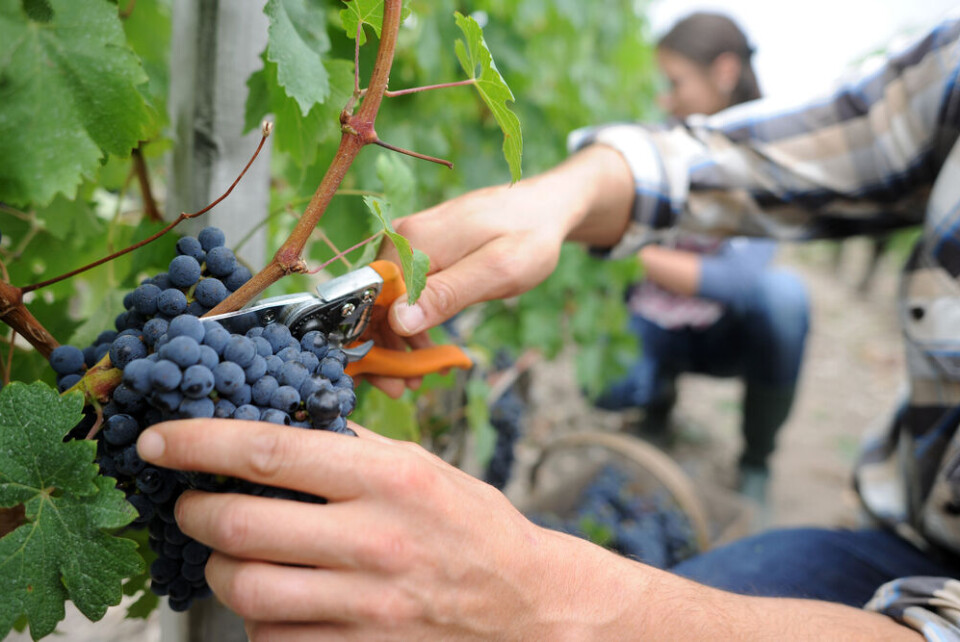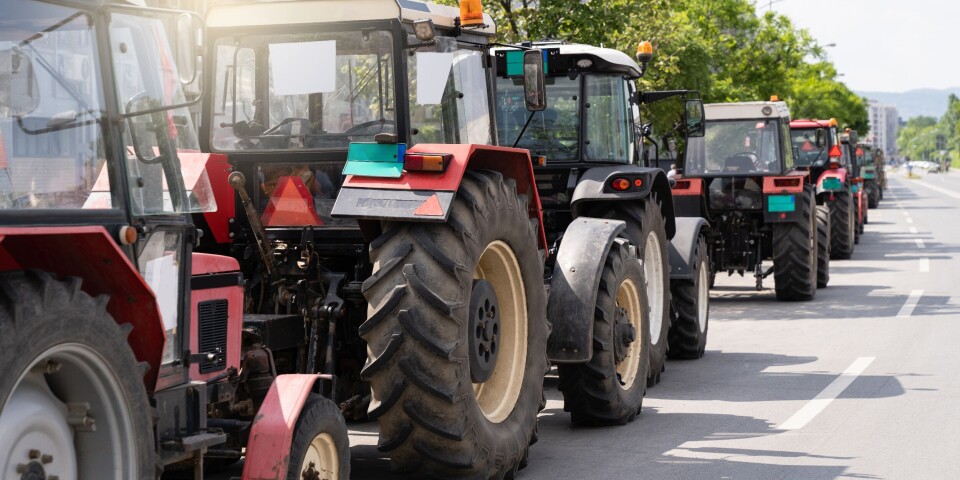-
Winegrowers outraged by €0.01 bottle of wine in French supermarket
Lidl claims labelling error but local farmers’ union says it threatens local production
-
Christmas gift ideas for French wine lovers
Our top picks for oenophiles, from decanters to Champagne
-
Rare champagne from Charles and Diana’s 1981 wedding to go to auction
Bottle was specially produced for the couple’s wedding
‘Why this was my most challenging harvest as a winemaker in France’
Vigneron Jonathan Hesford gives us a behind-the-scenes account of drought, hail and unreliable pickers in his mission to make wine in the Roussillon

I usually write in general terms about wine topics but having just finished one of my most challenging harvests, I thought I would write a personal account of our harvest here at Domaine Treloar in the Roussillon.
To give some background, we created the estate in 2006 after spending three years in New Zealand learning the craft.
We had bought an old but functioning winery along with nine hectares of vines, comprising most of the Roussillon grape varieties.
Since then we have added and removed a few vineyards, renovated the cellar and bought new equipment to make better wine more easily.
We bottle our whole production and sell most of it in export markets, focusing on small independent merchants and specialist importers.
On average we produce about 25,000 to 30,000 bottles per year, of mainly red wine.
2023 did not get off to a great start
The rainfall over winter was less than 50% of what it normally is. That meant that some of our vineyards never really grew much in spring.
Contrary to popular wisdom, it was the old vines on the hillside plots that suffered the most.
Our old vine Grenache and Mourvèdre entered summer with shoots that were only about 20cm long, instead of the usual 100cm.
Shoots that short are not capable of ripening a proper bunch of grapes because the leaves can’t photosynthesise enough to feed them.
Like most vineyards in France, we don’t have any irrigation in place nor any equipment to water the vines, even if we are permitted by the authorities. Therefore we just kept hoping for rain, in vain.
However, my Syrah vineyards grew as normal due to their location on stony soils, lower down and therefore closer to the water table.
I also had one vineyard of Grenache which recovered from a slow start after we got some rain towards the end of summer.
Read more: Winemakers in France face new problems each year due to climate change
Two days before harvest the deal fell through
Estate producers like us, which are known as récoltants are not allowed to buy fruit or wine from other growers or producers. Only négociants are allowed to do that.
However, this year the local Maison des Vignerons issued a special permission allowing us to buy in grapes so long as our total harvest remained under 80% of the average of the last five years.
From my estimates and calculations, that meant I was allowed to buy about three tonnes of grapes to add to the 16 tonnes that I thought my vines would produce (compared to the usual 25 tonnes).
I asked a neighbour, who is a member of the local cave coopérative if he would sell me some grapes, offering him about three times what he would receive from the cooperative. He refused.
Then I heard of another coopérateur who was trying to sell his vineyards.
We looked over the plots together and agreed a price for the grapes from two of them, which would probably come to 2.6 tonnes.
Two days before we were due to start picking, he phoned me up to say that his cave coopérative had written to him demanding that he should not sell those grapes as they were earmarked for a ‘special cuvée’.
So that deal fell through as well.
On the first day of harvest I am three pickers down
Knowing that we only had a reduced harvest, I only hired a small team of eight pickers. Two of them had picked for me before and introduced two of their friends, who I hired.
I check the ripeness of the grapes every day. Taking a representative sample to measure the sugar and acidity as well as tasting the skins to try to predict the perfect picking date, keeping an eye on the weather forecast.
Fortunately we had had decent rainfall the week before and the older Syrah vines were looking in perfect condition to start picking on September 4.
We all met in the winery courtyard at 07:00 on the 4th to start at first light so we could finish around lunchtime, when it becomes too hot for both the pickers and the grapes.
However, the two friends didn’t turn up. They gave the excuse of having to take their kids to school for the rentrée.
Another picker that had worked for me the year before didn’t turn up either and never answered any of my calls or messages over the next three days.
I always expect a few no-shows over harvest but to be three people down on day one was annoying. It meant we had to work into the afternoon to pick just 10 rows of vines.
Read more: ‘My candid experiences of hiring grape pickers in France’
We worked five long days, but at least the crop was healthy
That evening I phoned the two ‘friends’, both of whom told me they would not be available until Friday. Great!
So now it would take at least three days to pick a vineyard that we should have done in two.
I put a post on our village Facebook group asking for more pickers but it was too short notice to get people for the two Syrah vineyards that we needed to harvest.
So we worked five long days, bringing in a healthy, ripe crop of about 10 tonnes. I was relatively happy.
Over the weekend I met six prospective pickers to bolster the team. However, four of them only wanted to work ‘on the black’ for cash and I don’t do that because there is no benefit to me and I’d risk a prison sentence if reported.
In any case, we had harvested the bulk of the grapes and the remaining vineyards were all ones with reduced yields because of the drought. So with the two extras we would manage.
Not a single vine was undamaged after the hail storm
We picked the white grapes on September 11 and I told the pickers to take the rest of the week off as the other red grapes were not yet ripe. Some light rain was forecast during the week to help them along.
However, on Tuesday evening the light rain suddenly turned to a massive tempest of hailstones the size of golf-balls smashing down all over the village for about an hour.
Our first emergency was dealing with the water pouring through the skylights, flooding under doors and overflowing the gutters.
I knew the vines would have been damaged. When grapes are that close to harvest, hail will split them open and knock bunches to the ground and strip all the leaves.
The next morning I surveyed the damage.
All the remaining vineyards had been heavily hit. Not a single vine had undamaged grapes and the vineyards with the short shoots due to drought had no bunches left worth picking.
I called the pickers to ask them to come in the next day so we could salvage what was left.
Any damaged bunches left on the vine in the heat and humidity will turn rotten in a couple of days.
So September 14 turned out to be our last day of harvest.
Read more: The wine industry is in constant evolution in France and beyond
Running a wine estate means taking the rough with the smooth
We picked two vineyards of Grenache and Carignan but because they weren’t ripe enough to make red wine, I put the grapes straight in the press to make some rosé.
I was forced to leave the rest for the birds and rabbits.
We have just two tanks of red wine, both Syrah, three barrels of white wine and a tank of rosé. That’s compared to five tanks of red and four barrels of white in a normal year.
On the positive side, all the wines we are making look very promising.
Running a wine estate means taking the rough with the smooth. There are events and situations that you simply cannot predict. There is always next year.
Related articles
How to choose French wines to match classic British Christmas food
Career change: ‘What I learned at 54 working in a French vineyard’























